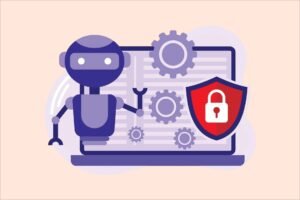Key Points
- Quantum computers may soon break current encryption methods, posing a significant threat to data security.
- The “harvest now, decrypt later” strategy means adversaries could steal encrypted data today and decrypt it in the future.
- Post-quantum cryptography (PQC) offers solutions to protect data against quantum attacks, with new standards already available.
- Organizations should start preparing now to ensure long-term data security, as the transition to PQC is complex and time-consuming.
Introduction
Imagine a world where the locks protecting your most sensitive information—bank accounts, medical records, or even national secrets—can be picked in seconds. This is the potential future with quantum computers, machines that harness the strange rules of quantum mechanics to perform calculations at unprecedented speeds. While they promise breakthroughs in fields like medicine and logistics, they also threaten the security of our digital world by potentially breaking the encryption we rely on daily.
The concept of “harvest now, decrypt later” is particularly alarming. It suggests that adversaries could steal encrypted data today and decrypt it later when quantum computers are powerful enough. This makes it critical to act now to protect data that needs to remain secure for years to come. In this article, we’ll explore how quantum computers work, why they threaten current cryptography, and the steps we can take to safeguard our data using post-quantum cryptography (PQC).
On This Page
Table of Contents
Understanding Quantum Computers
To understand the threat, we first need to grasp what makes quantum computers different from the classical computers we use today. Classical computers process information using bits, which are either 0 or 1. Quantum computers, however, use qubits, which can be 0, 1, or both simultaneously due to a property called superposition. This allows quantum computers to explore multiple solutions at once, making them incredibly powerful for specific tasks.
Another key property is entanglement, where qubits become linked so that the state of one affects the other, even across vast distances. This enables quantum computers to perform complex calculations more efficiently than classical computers.
Analogy: Think of a classical computer as a librarian searching for a book by checking each shelf one by one. A quantum computer is like having multiple librarians searching all shelves simultaneously, finding the book much faster. This ability makes quantum computers excel at tasks like searching large datasets or factoring large numbers, which are critical to cryptography.
As of 2025, quantum computers are advancing rapidly, with systems like IBM’s planned record-breaking qubit machine and Microsoft’s Majorana 1 processor. However, they are not yet powerful enough to break current encryption, which requires millions of qubits. For example, breaking a 2048-bit RSA key might need around 20 million qubits, while current systems have hundreds or thousands.
The Cryptographic Threat
Our current cryptographic systems fall into two categories: symmetric and asymmetric cryptography.
- Symmetric Cryptography: Uses a single key for both encryption and decryption. The Advanced Encryption Standard (AES) is a common example, with key sizes like 128 or 256 bits. Its security relies on the key being secret and long enough to resist brute-force attacks.
- Asymmetric Cryptography: Uses a pair of keys—a public key for encryption and a private key for decryption. RSA, named after its creators Rivest, Shamir, and Adleman, relies on the difficulty of factoring large numbers into their prime factors.
Quantum computers threaten both types, but in different ways:
- Grover’s Algorithm: For symmetric cryptography, this algorithm can search through possible keys more efficiently, effectively halving the key’s strength. For example, a 128-bit AES key offers only 64 bits of security against a quantum attack. Doubling the key size to 256 bits can restore security.
- Shor’s Algorithm: For asymmetric cryptography, this algorithm can factor large numbers exponentially faster than classical computers. For instance, factoring a 2048-bit RSA key, which would take classical computers longer than the universe’s age, could be done in hours or minutes by a quantum computer with sufficient qubits.
Example: Consider the number 21. Its prime factors are 3 and 7, which is easy to compute. But for a 2048-bit number (hundreds of digits), factoring is nearly impossible for classical computers. Shor’s algorithm makes this task feasible for quantum computers, breaking RSA and similar algorithms like elliptic curve cryptography (ECC).
The “Harvest Now, Decrypt Later” Scenario
The “harvest now, decrypt later” strategy is a significant concern. Adversaries could be collecting encrypted data today—such as emails, financial transactions, or government secrets—with the intent to decrypt it later when quantum computers are powerful enough. This is particularly risky for data that needs long-term protection, such as:
- Medical Records: Patient data that must remain confidential for decades.
- Financial Information: Bank transactions or credit card details that could be exploited if decrypted.
- Intellectual Property: Trade secrets that give companies a competitive edge.
- National Security: Classified information that could compromise safety if exposed.
Analogy: Imagine locking a diary with a padlock that’s secure today. If someone steals the diary now, they can’t read it. But if a master lock-picking tool is invented in the future, they could unlock it and read your secrets. Similarly, encrypted data stolen today could be decrypted in the future, making it critical to act now.
The exact timeline for when quantum computers will break current encryption is uncertain, with estimates ranging from 5 to 15 years. However, the risk of data being harvested now means organizations cannot afford to wait.
Quantum Safe Algorithms: Post-Quantum Cryptography
To counter this threat, researchers have developed post-quantum cryptography (PQC), which includes algorithms designed to resist quantum attacks. These algorithms are based on mathematical problems believed to be hard for both classical and quantum computers.
The U.S. National Institute of Standards and Technology (NIST) has led a global effort to standardize PQC algorithms. In August 2024, NIST finalized three standards:
- FIPS 203 (CRYSTALS-KYBER): For key encapsulation, used to securely exchange keys.
- FIPS 204 (CRYSTALS-Dilithium): For digital signatures, ensuring authenticity.
- FIPS 205 (SPHINCS+): Another digital signature algorithm, based on hash functions.
Additionally, HQC was selected for standardization in March 2025. These algorithms rely on problems like:
- Lattice-based cryptography: Based on the difficulty of solving lattice problems.
- Hash-based cryptography: Uses hash functions for secure signatures.
- Code-based cryptography: Relies on error-correcting codes.
- Multivariate cryptography: Uses systems of multivariate polynomials.
Table: Comparison of Key Sizes (128-bit Security Level)
| Algorithm | Type | Public Key Size | Private Key Size | Signature Size |
|---|---|---|---|---|
| CRYSTALS-Dilithium | Lattice | 1,312 B | 2,560 B | 2,420 B |
| SPHINCS+ | Hash Signature | 32 B | 64 B | 8 kB |
| NTRU Encrypt | Lattice | 766.25 B | 842.875 B | – |
| Rainbow | Multivariate | 124 kB | 95 kB | – |
| Goppa-based McEliece | Code-based | 1 MB | 11.5 kB | – |
| 3072-bit Discrete Log | Not PQC | 384 B | 32 B | 96 B |
| 256-bit Elliptic Curve | Not PQC | 32 B | 32 B | 65 B |
This table shows that PQC algorithms often require larger key sizes than current algorithms, which can impact performance and storage, especially for resource-constrained devices like IoT systems.
Preparing for the Quantum Future
Transitioning to PQC is a massive undertaking, especially for organizations with thousands of applications using cryptography. Achieving crypto agility—the ability to quickly switch algorithms—is essential to future-proof systems.
The preparation process involves three key steps:
- Discover:
- Create a cryptographic inventory to identify all instances of encryption in systems, networks, and databases.
- Use automated scanning tools to detect cryptographic implementations, as manual searches are prone to errors.
- Develop a Cryptographic Bill of Materials (CBOM) to catalog algorithms and their vulnerabilities.
- Manage:
- Define crypto policies that specify required encryption strengths and standards.
- Prioritize updates based on data sensitivity, focusing on critical systems first.
- Track progress to ensure the transition stays on schedule.
- Remediate:
- Update systems to use PQC algorithms, starting with NIST-standardized ones.
- For legacy systems, deploy crypto proxies that handle PQC on behalf of older applications, ensuring security over public networks.
- Test PQC implementations for performance and compatibility to avoid disruptions.
Example: A major bank discovered over 4,000 applications using cryptography. Updating one application per day would take over 10 years, highlighting the need to start now and prioritize critical systems.
Practical Steps and Tools
Organizations can leverage various tools and services to facilitate the transition to PQC:
- Automated Scanning Tools: Tools like those from PQShield can scan codebases and networks to identify cryptographic implementations, streamlining the discovery process.
- PQC Libraries: Open-source libraries, such as OpenSSL, are beginning to support PQC algorithms, allowing developers to test and integrate them.
- Hardware Security Modules (HSMs): Companies like Entrust offer HSMs that support PQC algorithms, providing secure key management.
- Cloud Services: Providers like AWS are integrating PQC into their cloud offerings, enabling quantum-safe encryption for cloud-based applications.
- Consulting Services: Firms like Quantum Xchange offer expertise in quantum key distribution and PQC, helping organizations plan their transition.
Example: A company with a legacy application can deploy a crypto proxy to use PQC for communication with modern browsers, protecting data over public networks without modifying the backend.
Individuals can also take steps by ensuring their service providers—such as banks or email services—are adopting PQC. Staying informed about quantum computing developments can help individuals make informed decisions about their data security.
Conclusion
The rise of quantum computing is both a promise and a peril. While it offers transformative potential, it also threatens to undermine the encryption that protects our digital lives. The “harvest now, decrypt later” strategy underscores the urgency of preparing for a quantum future. By adopting post-quantum cryptography and achieving crypto agility, organizations can safeguard their data against future threats.
The transition is complex, but with NIST-standardized algorithms like CRYSTALS-KYBER, CRYSTALS-Dilithium, and SPHINCS+, and tools from companies like PQShield and Entrust, the path forward is clear. Starting now is critical to ensure data remains secure when quantum computers become powerful enough to break current encryption.
FAQs
What are quantum computers, and why are they a big deal for data security?
Answer: Quantum computers are super-powerful machines that use the weird rules of quantum mechanics to solve problems much faster than regular computers. They can handle tasks like cracking codes or searching huge amounts of data in ways that today’s computers can’t. This is a problem for data security because the encryption we use to protect things like bank accounts, emails, or medical records relies on math problems that are hard for regular computers but could be easy for quantum computers. If quantum computers get strong enough, they could unlock our secrets, making our current security methods useless.
What does “harvest now, decrypt later” mean?
Answer: This is a sneaky tactic where someone steals your encrypted data today—like your bank details or private messages—even though they can’t read it yet. They just hold onto it, waiting for quantum computers to get powerful enough to crack the encryption. Once that happens, they can read all the data they collected. It’s like someone stealing a locked diary now, knowing they’ll get a key to open it in a few years. That’s why we need to protect data now, especially if it’s sensitive for a long time, like medical or government records.
How do quantum computers break encryption?
Answer: Most encryption today uses math problems that are super hard for regular computers to solve, like factoring huge numbers. Quantum computers use special tricks, like Shor’s algorithm, to solve these problems much faster. For example, cracking a code that would take a regular computer billions of years might take a quantum computer just hours. Another trick, Grover’s algorithm, makes it easier to guess secret keys for certain types of encryption, cutting their strength in half. This means our current locks won’t hold up against quantum computers.
What is post-quantum cryptography (PQC)?
Answer: Post-quantum cryptography is a new kind of encryption designed to be safe even against quantum computers. These new methods use different math problems that are believed to be tough for both regular and quantum computers to crack. Think of it like inventing a new type of lock that even a quantum-powered lock-picking tool can’t open. The U.S. National Institute of Standards and Technology (NIST) has already picked some of these new methods, like CRYSTALS-KYBER and CRYSTALS-Dilithium, which companies can start using now.
Can’t we just wait until quantum computers are here to worry about this?
Answer: Nope, waiting is risky! Because of the “harvest now, decrypt later” problem, bad guys could be grabbing encrypted data right now. If you wait until quantum computers are powerful enough, it might be too late to protect your data. Plus, switching to new encryption methods takes a lot of time—big companies might have thousands of systems to update, which could take years. Starting now gives you a head start to keep your data safe.
How can I protect my personal data from this quantum threat?
Answer: As an individual, you don’t need to become a quantum expert, but you can take some simple steps:
Check with your service providers: Ask your bank, email provider, or other services if they’re planning to use quantum-safe encryption. Companies like Google and Microsoft are already testing these.
Use strong passwords and two-factor authentication: These add extra layers of security that help even if encryption gets weaker.
Stay informed: Keep an eye on news about quantum computing and encryption updates so you know when to push for better security.
What should businesses do to get ready for quantum computers?
Answer: Businesses need to act fast to protect their data. Here’s a simple plan:
Find all your encryption: Make a list (or cryptographic inventory) of every place you use encryption, like in apps, databases, or websites. Tools from companies like PQShield can help with this.
Prioritize important data: Focus on updating systems that handle sensitive stuff, like customer info or trade secrets, first.
Switch to quantum-safe encryption: Start using post-quantum cryptography methods, like those approved by NIST. You can even use these on regular computers today.
Use crypto proxies: For old systems that are hard to update, use a middleman (a proxy) to handle quantum-safe encryption without changing everything.
Are quantum-safe encryption methods available now?
Answer: Yes! You don’t need a quantum computer to use quantum-safe encryption. New methods like CRYSTALS-KYBER, CRYSTALS-Dilithium, and SPHINCS+ work on regular computers and are ready to use. NIST finalized these in 2024, and companies like Entrust and AWS are already offering tools and services to help businesses switch. Open-source projects, like OpenSSL, are also adding support for these new methods.
How long will it take to switch to quantum-safe encryption?
Answer: It depends on how many systems you have. For a big company with thousands of apps, updating could take years. For example, a bank with 4,000 apps might need over a decade if they update one app per day. That’s why starting now is so important. Smaller businesses might take less time, but it’s still a big project that needs planning, testing, and prioritizing.
What happens if we don’t prepare for quantum computers?
Answer: If we don’t get ready, a lot could go wrong when quantum computers can break encryption:
Data breaches: Sensitive info like bank details, health records, or company secrets could be exposed.
Fake digital signatures: People could forge signatures on important documents, making them untrustworthy.
Broken systems: Things like online banking, power grids, or even government systems could become vulnerable. It’s like leaving your house unlocked in a neighborhood where master thieves are about to move in. Preparing now avoids this chaos.
Is there a way to make systems “future-proof” for quantum computers?
Answer: Yes, it’s called crypto agility. This means designing your systems so you can easily swap out old encryption for new methods without a huge overhaul. Think of it like building a house with walls you can repaint quickly instead of rebuilding every time you want a new color. To do this:
Keep a detailed cryptographic inventory.
Use flexible software that can switch algorithms easily.
Test new encryption methods regularly to stay ready for future changes.







